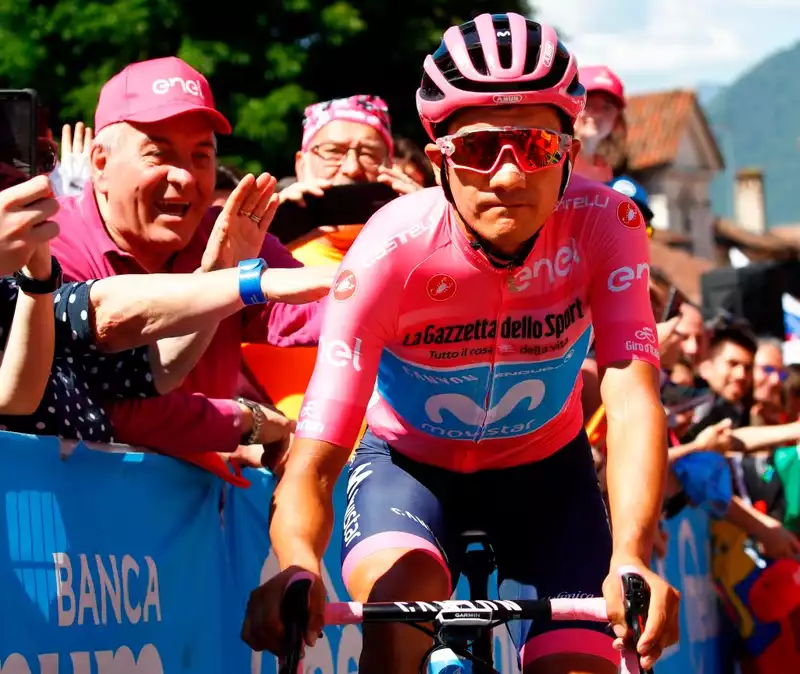The Giro d'Italia plans to require stage-finish spectators to wear wristbands that emit a sound when social distance is broken, as part of a series of measures and protocols to get the go-ahead from the Italian government for the three-week Grand Tour.
The Giro d'Italia is traditionally held in May, but the COVID-19 pandemic forced organizer RCS Sport to postpone the race until October, after the Tour de France. The race will start on October 3 in Sicily instead of Hungary, and will largely follow the original route, with new stages in Palermo, Basilicata, and Abruzzo added in place of the scheduled stage in Hungary. The Giro d'Italia will end on Sunday, October 25 in Milan, one of the areas most severely affected by COVID-19.
Race director Mauro Veni has the support of the Italian government, which sees the Giro d'Italia as a symbol of recovery from the COVID-19 pandemic. However, Veni recognizes that the race will be held on a restricted basis to protect the health of the riders and the general public.
"Things could go either way, but if things improve in July, the Giro will be held as usual. If things get worse, it will be worrisome and the Giro will be in danger like everything else," Veni said in an interview with Abruzzo television station Tele8 on Tuesday night.
"We are working on protocols. We control and then we go out on the road. We do not control the roads. Eventually, the public will be given wristbands that will emit a sound when people who do not observe social distance come into contact with them, and they will register who they come into contact with. There will be a serious investment in social distancing.
"It is difficult to see a publicity caravan taking place, but we can only hope that the data will improve and things will change. Our concern is that it could spark congestion. We are working with our sponsors to study what we should do."
[12The RCS will also host a series of classics, including Strade Bianche, Milan-San Remo, and Il Lombardia in August, and Tirreno-Adriatico in September, which are expected to draw much smaller crowds than the Giro d'Italia, so there is less concern. Based on the current COVID-19 situation, any rules or protocols could be changed.
"I think the mid-July data will be important. If each region can keep the number of people infected with the virus down, it will open up more. Obviously Lombardy is the worst, but barring a one-day race in August, the Giro will pass through Lombardy at the end of October.
"It was difficult to create a new race calendar, so we pushed the nine months down to three months. There were some scheduling conflicts because of the differences in dates with other countries. Everyone rides the races they want to ride. We wanted to send an important message that Italy is back."
[20The new route for the Giro d'Italia will be announced in early July, with a short time trial in Palermo replacing the scheduled time trial in Budapest. The race will then cross Sicily and head north along the Adriatic coast, with the final mountain stage in the Alps, where the time trial to Milan will determine the overall winner.
Vincenzo Nibali (Trek-Segafredo), Jakob Fuglsang (Astana), 2019 winner Richard Carapas (Team Ineos), Remco Evenpole (Detunink-Quickstep), Peter Sagan ( Bora-Hansgrohe) and others have been confirmed for the Giro d'Italia.
Cycling News will have full coverage of the Giro d'Italia (October 5-29).


Comments